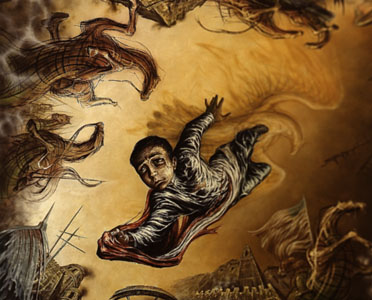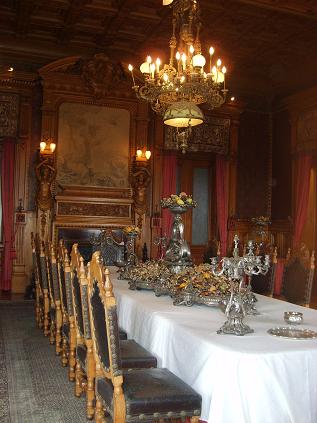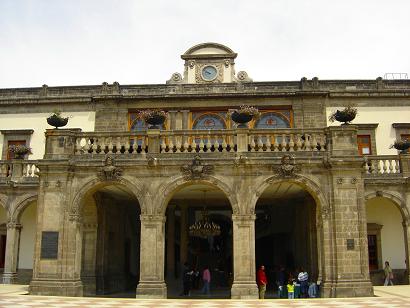| << Chapter < Page | Chapter >> Page > |
As a result, the Crown ordered a halt to the construction and attempted to auction it off at the price of 60 thousand pesos (even though they had already spent over 300 thousand pesos on its construction up to that point) (Zavala). Due to a lack of interest in the building, Viceroy Juan Vicente de Güemes Pacheco y Padilla, the 2nd Count of Revillagigedo, ordered that the building be used to house the Kingdom of New Spain’s General Archive. This project also failed (Zavala).
In 1806, Mexico City’s municipal government finally purchased the building and surrounding forest (Zavala). The building remained abandoned, however, during Mexico’s War of Independence. In 1833, it became the Military Academy.
Due to the strategic location and fortress-like surroundings of the building, Chapultepec Castle served as a military post during the Mexican American War (1846-1848) and stood as Mexico City’s last line of defense against the US American army. The Battle of Chapultepec (Sept. 12-13, 1847) was the last battle before the US captured Mexico City, ending the war (for more on significant battles and battle plan maps of the Mexican American War, including the Battle of Chapultepec, see the module: Maps of the Mexican American War ).
Mexican legend holds that during the Battle of Chapultepec, six brave teenage cadets refused to abandon their posts and died defending their country. Their names were: Juan de la Barrera, Juan Escutia, Francisco Marquez, Agustin Melgar, Fernando Montes de Oca, and Vicente Suarez (Tuck). The final survivor, Juan Escutia, is said to have wrapped himself in the Mexican flag and jumped from the castle roof to prevent the flag from falling into enemy hands.
Sacrificio de los niños heroes (sacrifice by the boy heroes)

In 1864, during the Franco Mexican War (also known as the French Intervention), the French-imposed sovereigns, Emperor Maximilian (Maximiliano) and Empress Charlotte (Carlota) , chose to live in the castle. They hired several Austrian, French, Belgian, and Mexican architects to improve the castle’s living conditions (Museo). In order to connect Chapultepec to Mexico City, Emperor Maximilian commissioned the creation of a boulevard named Paseo de la Emperatriz (the Empress’ Promenade). Today, this boulevard is named Paseo de la Reforma (Reform Promenade). Maximilian and Carlota also had vast improvements made to the castle’s rooftop garden (Museo).
Chapultepec dining room

After the fall of the Second Empire of Mexico in 1867, the castle remained abandoned for almost ten years. In 1876, it was designated as the Astronomical, Meteorological, and Magnetic Observatory ("Antecedentes Históricas"). The Observatory, however, was moved to a different site in 1883 and the Military College once again had access to the grounds. The castle then underwent renovations in order to serve as a presidential palace for years to come ("Antecedentes Históricas").
Chapultepec Castle’s last designation occurred in February 1939, when President Lázaro Cárdenas ordered the creation of the National Institute for Anthropology and History, naming the castle as the location of the Museo Nacional de Historia (National History Museum) ("Antecedentes Históricas"). Today, a part of the castle houses various museum collections and part (known as the Alcázar shows off the elegant European decor and furniture of the castle's heyday.
Chapultepec castle west wing

“Antecedentes Históricas” Museo Nacional de Historia. (External Link)
Cano, Olga. “Historia.” Bosque de Chapultepec. (External Link)
“Los niños héroes.” (External Link)
Tuck, Jim. “Mexico's Niños Heroes ("heroic children"): reality or myth...” October 9, 2008. Mexconnect. (External Link)
Zavala y Alonso, Manuel (ed). “Bosque, cerro y castillo de Chapultepec” Artes e Historia México. INAH. (External Link)

Notification Switch
Would you like to follow the 'Hispanic culture for the spanish classroom' conversation and receive update notifications?